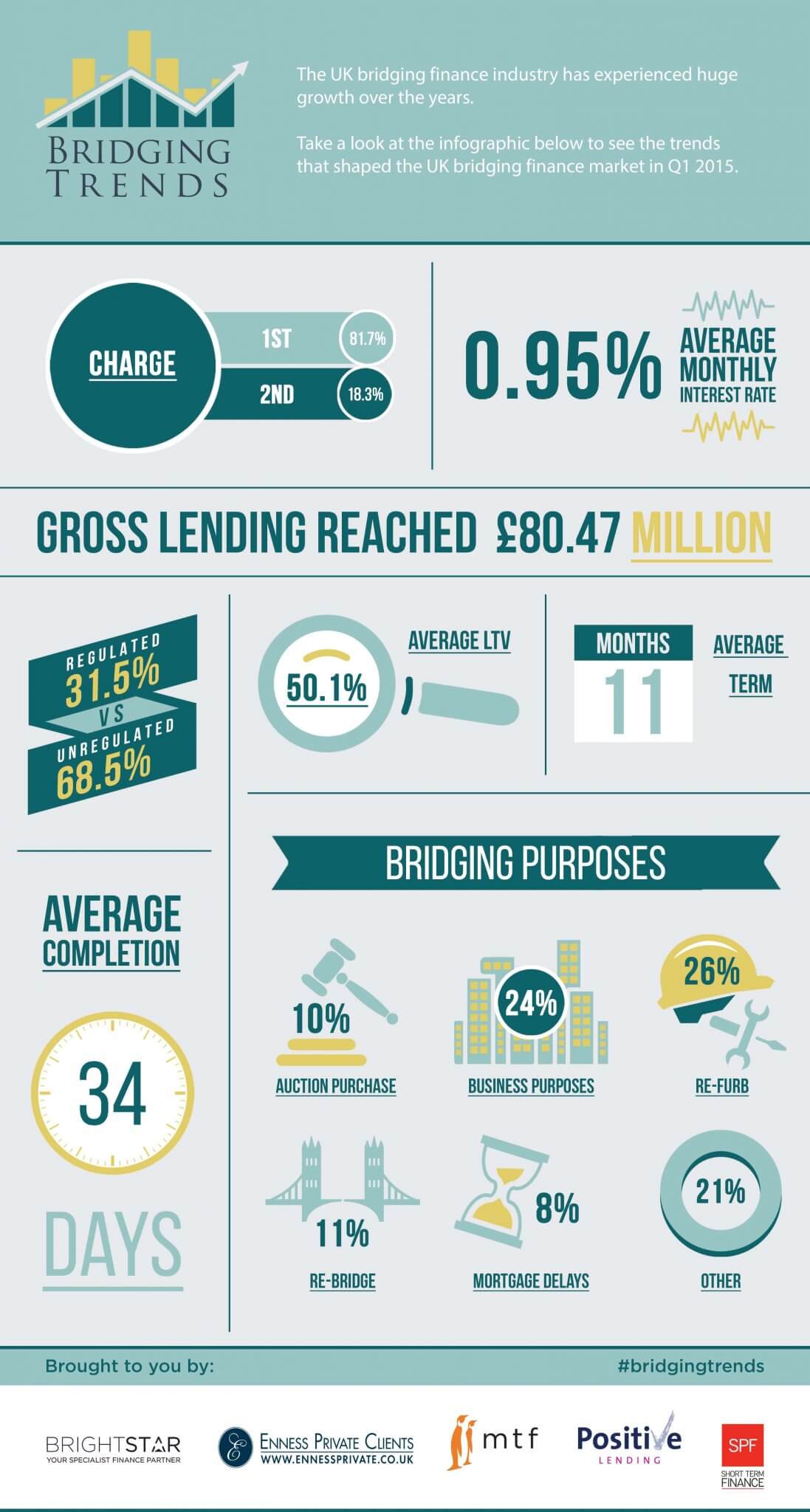
The infographic covers data gathered from award-winning bridging lender, MTF and Brightstar Financial, Enness Private Clients, Positive Lending and SPF Short Term Finance, with the aim to deliver the most realistic representation of the bridging loan market.
Bridging Trends will be updated quarterly and will measure key indicators such as average monthly interest rate, typical loan purpose and average completion time.
The bridging loan market has grown significantly as banks reduce short term lending and MTF and the financial packagers saw a need to record the market going forward.
Joshua Elash, director of bridging finance lender MTF, said: “There has been a lack of transparency in the bridging finance sector and we thought it would be beneficial to bring together a number of the UK finance industry’s largest packagers to collect data and present the objective information as a benchmark for the sector."
“Bridging Trends will be a useful tool for financial market players as it will deliver a more realistic representation on the specialist lending market.”
Key points from the report showed that the average bridging loan term was 11 months, the average LTV was 50%, and the average interest rate was 0.95%. Property refurbishment was the most popular use for bridging loans. 65% of bridging loans in the period were unregulated.
“In its first quarter, the data has already shed light on some interesting factors in the bridging finance market. A significant percentage of bridging loans are unregulated, suggesting they are largely being used in a commercial context. LTV levels remain sensible, notwithstanding some recent entrants offering high LTV loans,” Joshua Elash said.
“However, the most significant result involves duration. An 11 month average term signifies how the bridging loan market has changed over time from being a short term fix to a longer-term facility, providing extra breathing space to the rising number of borrowers struggling to secure mainstream funding. These results suggest ‘bridging finance’ is no longer a broadly appropriate phrase and poses the question, ‘is this the new breed of specialist lending’?”
Chris Whitney, Head of Commercial Finance at Enness Private Clients said:
“Typically the first three months of the year can be unpredictable in terms of completions, but the overall loan to value was surprisingly low. The average rate on the other hand was surprisingly high in an environment where pricing is under downward pressure. This can be accredited to the more expensive highly specialist and niche short term financing requirements (like leasehold restaurants) which helped balance the overall figures.”
Kit Thompson, Director of Bridging at Brightstar Financial, said:
“The split of 1st and 2nd charge business was as I would expect, as was the Regulated vs Non-regulated business split. The real stand-out trends for me were the average LTV, which was surprisingly low (at 50%). The average monthly rate, which at 0.95% was higher than I expected and also the 11 month average term, which once and for all should put to bed the misconception that bridging loans are typically repaid in less than 6 months. Here at Brightstar we always encourage our brokers and borrowers, to take more time than they consider they need, just to safe-guard them against defaulting. With exit fees generally being a thing of the past, clients can always redeem early, but failing to repay by the end of the term can be extremely costly. This is where borrowers need to seek advice from bridging experts."






